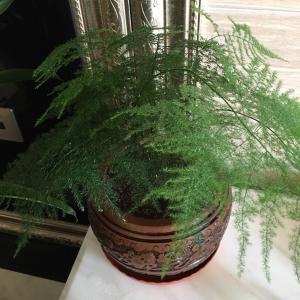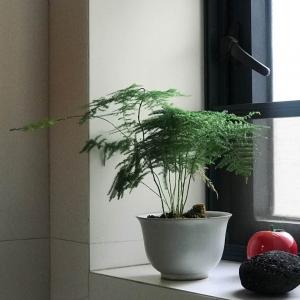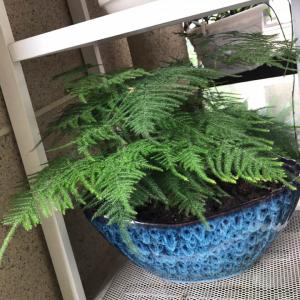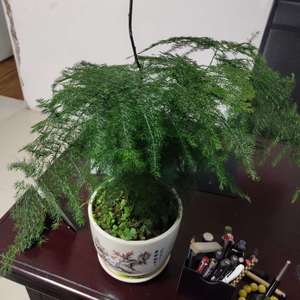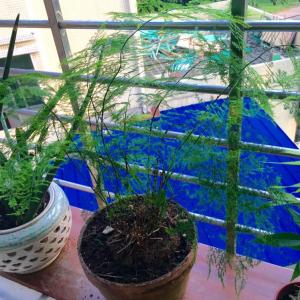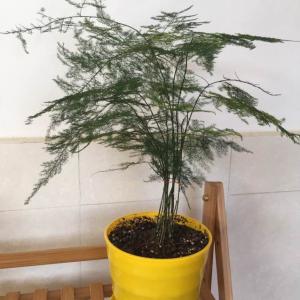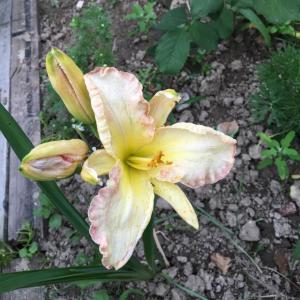Posts (312)
气泡布鲁鲁
09-03

A Guide To Essential Oils For Hair Growth
Studies have shown that essential oils promote hair growth. Now that that's clear let's learn about essential oils for hair and different products you can use to support your hair.A Healthy Scalp
Lavender Oils: Are calming and can treat active inflammations that can impact the scalp, such as eczema and psoriasis. A lavender-boosted hair growth shampoo and matching hydrating conditioner will keep our scalp clean, so our hair can grow and flourish (and smell great, too). Chamomile: Like lavender, it is an essential oil that soothes hair and scalp. Furthermore, it adds shine to our hair and keeps the scalp lightly hydrated. Tea tree oil: Besides being anti-inflammatory and antibacterial, it helps treat scalp conditions. As it promotes a clean environment, it supports a clear hair follicle and is considered a hair growth essential oil.Stimulates hair growth
Rosemary oil is one of the most successful essential oils for hair growth. In addition to stimulating hair growth and conditions the scalp, drawing oxygen and blood. By including it in a hair care regimen - whether through treatment, a shampoo, or a conditioner - faster hair growth is likely to occur. Peppermint stimulates blood flow by drawing it to the area. Applying peppermint to the scalp or using a shampoo and conditioner infused with peppermint, for example, can stimulate hair growth, shine, and volume. Cedarwood essential oil creates balance on the scalp and fights bacteria, making it an excellent essential oil for hair growth.Nourishing Hair
Ylang-ylang hydrates hair and has a floral fragrance. By improving shine, conditioning, and preventing breakage or dryness on the scalp, this product helps to maintain a healthy scalp. Sandalwood also smells lovely, but it helps hydrate the scalp from root to tip to help prevent additional stress. Almond oil promotes optimal hair growth by providing moisture to the scalp.Is It Safe To Use Essential Oils?
Skin irritation and allergic reactions are the most common risks associated with essential oils. For essential oils to be effective, they must be diluted due to their high concentration. Furthermore, you can also simply massage your scalp as often as possible as a way of keeping it healthy. Most essential oils are safe when used correctly and won't cause any side effects. It is crucial, however, to use it wisely, just like any other substance you put in your body. We do not recommend eating or drinking essential oils. Please note the following factors:Quantity
Essential oils are most safe when used at the correct dose. The use of high concentrations and incorrect amounts of essential oils (used in laboratory and animal studies) have been found to cause cancer and other adverse effects on the human body. Using improperly can damage the skin, liver, and other organs. The use of excessive oil can lead to oily hair and oily scalp, causing irritation to users. Knowing the proper dosage of carrier oil is essential.Quality
A synthetic chemical or another essential oil with a similar odor can sometimes convert essential oils into a modified version. Essential oil can be blended with vegetable oils to create a diluted version. The label should indicate cleanliness. It is not always bad if the bottle states that 20% essential oil is mixed with 80% vegetable oil. Occasionally, this is done to make more popular oils, such as rose or neroli oil, more affordable (pure tea costs more than $100 per teaspoon). You should dilute professional-grade essential oils for safety purposes if you start using them.The Application Method
It may be safe to use safe essential oils in one method but unsafe in another. Inhaling some oils is considered safe but applying them to the skin at a concentration of 3-5% can cause irritation. For instance, oregano, cloves, and cinnamon bark are used in the production of essential oils. Orange, bergamot, lemon, lime, and angelica oils are among those that can cause phototoxicity (severe burns or skin cancer). Verify the recommended method of use, the concentration, and the intended use of the essential oil. Consume oil only with the advice of a professional.Conclusion
Hair growth may be stimulated by essential oils and scalp massage if inflammation or poor blood flow to the scalp is present. When massaging essential oils onto the scalp, mix them with carrier oils in small amounts. The essential oils may need to be applied repeatedly or frequently to show results for some people. Those who fail to achieve the desired results can speak to their doctor about other options to reduce hair loss.
Article
气泡布鲁鲁
09-03

1. Avoid over-washing your hair
The most common mistake men make is washing their hair too frequently. You should wash your hair twice or thrice a week and condition it every time. This would safeguard the hair's health and prevent the loss of essential oils.2. Always dry your hair gently
There is no doubt that hair is weaker when wet and more prone to damage. You should avoid rubbing your hair after it has been washed, as this will cause excessive breakage. Avoid stressing your scalp by patting it dry instead.3. Remove your comb-over
Your hair may be thinning. If your hair is thinning, get a haircut that suits you. Comb Overs must never be done.4. Apply egg conditioner to your hair
Sulfur and proteins are essential minerals for healthy hair, and eggs are loaded with them. Using egg yolk regularly as a conditioner for your hair will enable you to utilize all the benefits of the egg. You can strengthen your follicles from within by letting the egg yolk penetrate deeply into your scalp.5. Ensure that your hair is protected from chlorine
Swimming pools contain chlorine, which can cause your hair to become brittle and dry. To prevent your hair from chlorine's damaging effects, wash it with clean water and apply a mild conditioner before entering a pool. Swimming caps can also be worn as an alternative.6. Don't use too many hair products
Any hair product used too much will make your hair appear unnatural and heavy. The right way to style your hair is by using a minimal amount of these products.7. Wash your hair with a clarifying shampoo
Hair products can build up over time and cause your hair to look dull and lifeless. The only way to remove all the built-up and keep your hair shiny is to use a clarifying shampoo. The pH level of your hair can also be balanced by using white vinegar as a hair rinse. Even though it sounds strange, it's really effective.8. Wash once, don't repeat
Using shampoo twice is a myth that must be dispelled. Don't be fooled by advertisements on television that tell you to wash, rinse, and repeat to get the best results. Once you have washed your hair, you don't need to rewash it.9. Reduce the heat
Don’t use hair dryers to dry your hair. Allow hair to dry naturally. You might have to wait for a while, but it will surely keep your hair from frizzing. When using a hair dryer, keep the heat setting low.10. Keep it natural
Repeating chemical treatments can damage your hair beyond repair, so limit coloring, perming, straightening, etc.Texture-based hair types
Texture and thickness are the two categories of hair types. To have genuinely great hair, you need to identify your hair type and learn how to maintain it.Straight hair
Straight hair lacks any definitive curl, making it easy to distinguish. Straight hair holds up well despite poor weather, poor styling, and high heat. Natural oils flow freely into the hair follicles from the scalp since the hair is straight. The result is naturally shiny straight hair. If the hair is not washed regularly, this oil will build up quickly, giving it a "greasy" look. Keeping the oil issue under control makes this hair type easy to manage. Maintenance: Oil buildup is your hair type's biggest enemy. You should shampoo your hair frequently, at least once a day. This hair type won't need much maintenance, so a shampoo that focuses on deep cleaning is an excellent choice. Also, you might want to consider a volumizing shampoo, which is lighter than other shampoos.Wavy Hair
It is a perfect blend of straight and curly. Unlike straight hair, wavy hair is more likely to suffer frizz due to excessive oil buildup. Natural waves have a lot of natural volume and texture, making them desirable. Maintenance: While shampooing is necessary, conditioning is more critical for wavy hair. You'll have less frizz if you use a great conditioner, which keeps your natural wave intact.Curly hair
Multiple curls are present in an inch-long strand of hair when it is curly. It is prone to damage, especially frizz because curly hair tends to get thick and doesn't build up too much oil. If you can manage to keep your curls from frizzing, it’s great! Achieving this look is a goal for some guys. Instead of trying to get rid of your curls, embrace them. Maintenance: Regularly shampoo and condition the hair. Water temperature is critical here. To avoid frizz, you should lower the temperature. Frizz can be eliminated with an Argan Oil treatment. Don't brush curly hair when it's dry. Be gentle with it, as it is easily damaged. Using a comb while the conditioner is still in the hair is the best method.Conclusion
Knowing your hair type and understanding the basics will help you set up a simple, easy-to-maintain routine. In the case of more challenging hair concerns, like hair loss, you will need to do your research first. A trained healthcare professional may also be able to help you decide on your options.
Article
气泡布鲁鲁
09-03

How do whiteheads form?
Cleaning routines, lifestyle habits, and genetics all play a major role in the prevalence of whiteheads. Fluctuating hormone levels can also trigger acne breakouts. The more sebum your skin produces, the more likely it is to clog and create whiteheads. ● Puberty Sebum production increases during puberty as a result of hormonal changes. Young people undergo puberty when their brains release GnRH hormones, which signal the pituitary gland to release two additional hormones called androgens. Hormones like these promote oil production, also called sebum, below the skin. ● Genetics Acne prevalence is strongly correlated with genes since they often determine hormonal changes and skin sensitivity. ● Stress Under stress, acne-prone cells produce excess sebum, which can cause breakouts, including whiteheads, cystic acne, and other pimples. Studies have shown that high-stress levels result in acne breakouts that are more frequent and intense. ● Hormonal Changes Throughout Life There is a higher likelihood of women experiencing hormonal changes beyond puberty due to various life events. Many women find that their hormones fluctuate (around six weeks) during pregnancy, leading to acne outbreaks. In addition, many women experience whiteheads and other acne worsening during their menstrual cycle. Progesterone levels increase when estrogen levels decrease, signaling the glands to produce more oil. ● Personal Habits Acne and whiteheads may also be exacerbated by personal habits. Many studies have found a correlation between certain foods and the prevalence of whiteheads. However, diets have not been proven to be a direct cause. Whiteheads also appear when your body attempts to push out an infection. A small bump indicates that your skin is trying to push out bacteria from an infected pore.Here are some home remedies for whiteheads
Whiteheads don't have to be an expensive problem! Here are a few natural remedies you can use at home to eliminate whiteheads. ● Honey It is well known that honey has antibacterial properties. Honey's high viscosity allows it to coat the skin with a barrier that shields it from infection. Take the appropriate amount of honey and place it in a glass bowl. Add water to make its consistency more comfortable to apply to the skin. Keep this on for 15-20 minutes after applying it to the affected area. Wash off with lukewarm water. ● Aloe Vera As an astringent, aloe vera tightens pores and acts as an astringent. Additionally, it has antibacterial properties that help fight whiteheads. Start by cutting off the flat end of an Aloe vera leaf. Scoop the gel out and directly apply this gel to your skin for 15-20 minutes before washing it off. ● Tea Tree Oil In addition to its antimicrobial properties, tea tree oil has antiseptic properties. Add coconut, jojoba, or olive oil to tea tree oil in a bowl and thoroughly mix it. This mixture should be dabbed onto the affected area with a cotton swab and left on for 15-20 minutes. Use lukewarm water to rinse and then pat dry. ● Witch Hazel Witch hazel reduces inflammation caused by whiteheads due to its ability to inhibit the growth of microorganisms. Put the required amount of witch hazel solution in a bowl. Apply it to the affected area with a clean cotton ball to see the result. ● Coconut Oil Whiteheads are caused by bacteria resistant to coconut oil's antibacterial properties. Ensure that the skin is properly cleansed and dried before applying coconut oil. Massage the coconut oil thoroughly onto the affected skin area for the best possible results.Taking preventive measures:
While it is difficult to completely prevent whiteheads, some things can help: ● Use non-comedogenic makeup. ● Before going to bed at night, remove all makeup from your face. ● Don't touch your face too often. ● Make sure your hair is clean. ● Keep your face clean.When to Seek Medical Help?
The appearance of whiteheads usually goes away within seven days, but you can seek medical attention if they persist. Although not life-threatening, whiteheads during adolescence can affect a person's mental health. Additionally, it can affect one's self-image. Whiteheads may lead to depression or anxiety, so it is essential to consult a healthcare professional if one is experiencing such symptoms.
Article
气泡布鲁鲁
09-03

Reasons For Enlarged Pores
● Genes The primary determinant of your pore size is your gene. Large pores are common in some families. ● Age Aging makes your skin lose its elasticity, which causes it to stretch and sag, resulting in larger pores. The thickening of your skin also results in minuscule skin cells gathering around your pores, giving the appearance of larger pores as you age. ● UV damage Large pores can be caused by years of sun exposure. The skin can become thicker due to sun damage, resulting in bigger pores. Sun exposure can also strip your skin of collagen, elastin, and water, causing your pores to sag and look bigger. ● Blocked pore Pores may appear larger than usual when oil and dead skin cells gather in them.Best Ways To Minimize Large Pores At Home
1. Clean Your Face Daily
Wash your face up to twice a day, or more if you play sports or sweat a lot. Using lukewarm water, gently apply a cleanser with clean fingers. Choose a gentle cleanser that isn't too rough and doesn't have any alcohol in it. Don't scrub or rub the skin, and use a clean towel to pat the face dry. This will help get oil and dirt out of your pores and make them less noticeable.2. Exfoliate Regularly
It is important to exfoliate to get rid of dead skin cells present in the outer layer of the skin. Exfoliation also makes the skin brighter and smoother. You won't see your pores stretching out and looking bigger if you remove dead skin cells routinely. Exfoliants come in two types: ● Physical exfoliators: These cleansers have tiny scrubbing particles you can feel with your hands. Face scrubs help remove dead skin cells from your face by buffing and sloughing them away with granule-filled formulas. ● Chemical Exfoliators: AHAs and BHAs are two subcategories of chemical exfoliants: Alpha Hydroxy Acids generally come from natural sources such as sugar cane glycolic acid, milk lactic acid, apple malic acid, citrus citric acid, and grapes tartaric acid. We can use these acids to enhance our skin's natural moisture levels, reduce wrinkles and fine lines, smooth rough skin texture, and improve dull, uneven skin tone because they are water-soluble. Salicylic acid is usually considered a beta hydroxy acid. AHAs are like BHAs but penetrate deeper into the skin and inside the pores. However, you should not exfoliate your skin too much. Skin can become dehydrated and inflamed if the protective layer of the skin is stripped away. Exfoliation frequency, intensity, or type should be decreased if this occurs. The type of exfoliator you choose will depend on your skin type.3. Use Sunscreen
Wearing sunscreen is essential. When exposed to the sun constantly, pores sag and stretch around the edges, making them appear larger.Procedures to Minimize Pores
● Chemical Peels It is best to use chemical peels to shrink enlarged pores. Chemical peels can improve the appearance and texture of your skin by removing the damaged outer layer. Acid and acid concentrations are essential in determining the peel type. A chemical peel's depth depends on the desired outcome (light, medium, or deep). The best peel will be determined by your dermatologist based on the characteristics of your skin. ● Microdermabrasion The process of microdermabrasion involves the resurfacing of the skin. A mechanical exfoliation removes the dead skin cells on the face's surface in order to reveal more youthful-looking skin beneath. It boosts collagen and elastin and promotes healthy skin by stimulating microcirculation and oxygen production through minimally invasive microdermabrasion. ● Micro-needling Pores can also be reduced with micro-needling. Collagen and elastin are formed in the skin through controlled micro-injuries caused by tiny needles. As the skin repairs, wrinkles become softer, and the epidermis becomes thicker. Micro-needling also creates microchannels for the skin to absorb topical gels, creams, serums, and other products more effectively, improving the deeper layers of the skin.Conclusion
To prevent breakouts and reduce the appearance of large pores, a variety of treatments are available. Skin care regimens can help improve the overall appearance and health of the skin for many people. Doctors or dermatologists can provide more advice if at-home treatments fail.
Article
气泡布鲁鲁
09-03

Introduction
Your home is your sanctuary, and it's important to keep it safe and secure. Whether you live in a house or an apartment, there are steps you can take to protect your property and your family. In this article, we'll explore some of the best home security tips to keep your home safe and secure.Keep Your Doors and Windows Locked
One of the most important things you can do to keep your home safe is to keep your doors and windows locked. This may seem like common sense, but many burglars are able to enter homes through unlocked doors and windows. Make sure all of your doors have deadbolts and use them when you're at home and when you're away. If you have sliding glass doors, place a wooden dowel or a security bar in the track to prevent them from being opened from the outside. In addition to locking your doors and windows, consider installing a security system. A security system can provide an extra layer of protection and can alert you and the authorities in the event of a break-in.Install Outdoor Lighting
Outdoor lighting can be a great deterrent to burglars, as they prefer to work in the dark. Install motion-sensor lights around the perimeter of your home, especially near doors and windows. If you're going to be away from home for an extended period of time, consider using timers to turn lights on and off at different times throughout the day and night. This can give the impression that someone is home and deter burglars from targeting your home.Secure Your Garage
Many people overlook the security of their garage, but it can be a vulnerable entry point for burglars. Make sure your garage door has a sturdy lock and that the door leading from the garage to your home is also secure. If you have windows in your garage, consider installing curtains or frosted glass to prevent burglars from seeing inside. Additionally, never leave your garage door opener in your car, as it can be an easy target for thieves.Be Mindful of Social Media
Social media can be a great way to stay connected with friends and family, but it can also provide burglars with valuable information about your whereabouts. Avoid posting about your travel plans or the fact that you're away from home. If you do need to post about your travels, consider waiting until you're back home to share your experiences. Additionally, make sure your privacy settings are set to only allow people you trust to see your posts.Get to Know Your Neighbors
Getting to know your neighbors can be an effective way to keep your home safe. When you're away from home, ask a trusted neighbor to keep an eye on your property and to report any suspicious activity. Additionally, consider joining a neighborhood watch program. Neighborhood watch programs can be a great way to keep your community safe and to deter criminals from targeting your neighborhood.Conclusion
Keeping your home safe is important for the well-being of your family and your property. By following these home security tips, you can reduce your risk of being targeted by burglars and keep your home secure. Remember to keep your doors and windows locked, install outdoor lighting, secure your garage, be mindful of social media, and get to know your neighbors. By taking these steps, you can create a safe and secure environment for you and your family.
Article
气泡布鲁鲁
09-03

Reduce, Reuse, Recycle
The three R's - Reduce, Reuse, Recycle - are the cornerstone of living green. Reducing the amount of waste you produce is the first step towards a sustainable lifestyle. Start by avoiding single-use products, such as disposable plates, cups, and utensils. Instead, opt for reusable items that can be washed and used again. This includes cloth napkins, metal straws, and reusable water bottles. Reuse items whenever possible. This means finding new ways to use items that would otherwise be thrown away. For example, instead of buying new containers for food storage, wash and reuse glass jars from products like spaghetti sauce or pickles. Recycling is also an important part of living green. Make sure you know what can and cannot be recycled in your area, and be sure to recycle properly. This means cleaning and sorting recyclable materials before placing them in the appropriate bin.Conserve Water and Energy
Conserving water and energy is another important aspect of living green. Start by turning off lights and electronics when they are not in use. Unplug chargers and appliances when they are not in use, as they can still consume energy even when turned off. Fixing leaky faucets and toilets is an easy way to conserve water. Be sure to turn off the tap while brushing your teeth, and take shorter showers to conserve water. You can also install low-flow showerheads and faucets to reduce water usage.Choose Sustainable Products
Choosing sustainable products is another important step towards living a green lifestyle. This means selecting products that are made from renewable resources, and that are produced in an environmentally responsible way. Look for products that are certified as organic, fair-trade, or sustainably sourced. When it comes to food, choose organic produce whenever possible. This means selecting fruits and vegetables that have been grown without the use of pesticides or other harmful chemicals. Choose locally grown produce when possible, as this reduces the carbon footprint associated with transporting food long distances.Reduce Your Carbon Footprint
Your carbon footprint is the amount of greenhouse gases that you produce, primarily through the burning of fossil fuels. By reducing your carbon footprint, you can help to mitigate the effects of climate change. Start by reducing your energy usage, as this is the largest contributor to most people's carbon footprint. Choose alternative modes of transportation whenever possible. Walk, bike, or take public transportation instead of driving alone. When driving is necessary, carpooling is a great option. You can also consider purchasing an electric or hybrid vehicle to reduce your carbon footprint.Eat a Plant-Based Diet
Eating a plant-based diet is not only good for your health, but it is also good for the planet. Animal agriculture is one of the largest contributors to greenhouse gas emissions, and reducing your consumption of animal products can help to reduce your carbon footprint. Start by incorporating more plant-based meals into your diet. This can be as simple as swapping out meat for tofu or legumes in your favorite recipes. You can also try new plant-based recipes to expand your culinary horizons. And if you do eat animal products, choose sustainably sourced and ethically raised options whenever possible.Support Sustainable Practices
Supporting sustainable practices is an important aspect of living a green lifestyle. This means supporting businesses and organizations that prioritize sustainability and reducing their environmental impact. Choose companies that use sustainable materials and production methods, and that prioritize reducing waste and emissions. Support organizations that work towards environmental conservation and protecting natural resources. By supporting these initiatives, you can help to make a positive impact on the planet.Conclusion
Living a green lifestyle is about making conscious choices that are sustainable and responsible. By following these tips and making small changes in your daily life, you can reduce your impact on the planet and help to preserve it for future generations. Remember, every little bit counts, and even small changes can make a big difference.
Article
气泡布鲁鲁
09-03

1. Add a Fresh Coat of Paint
One of the simplest and most cost-effective ways to update your home is by painting. A fresh coat of paint can instantly transform a room, giving it a brighter, more modern look. Whether you choose a bold color or a neutral shade, painting is an easy DIY project that can be done in a weekend.2. Update Your Lighting
Good lighting can make a big difference in your home. Consider adding new light fixtures or updating your existing ones. You can also add table lamps, floor lamps, or string lights to create a cozy atmosphere. LED bulbs are energy-efficient and long-lasting, making them a great choice for your home.3. Add Some Greenery
Adding plants to your home is an easy way to bring some life to your space. You can choose from a variety of indoor plants, such as succulents, ferns, or snake plants. Plants not only add visual interest to your home, but they also help purify the air and create a relaxing atmosphere.4. Update Your Hardware
Updating your hardware is an easy and affordable way to give your home a fresh look. You can replace your cabinet knobs and drawer pulls, update your light switch covers, or add a new door knocker. Small changes like these can make a big impact on the overall look and feel of your home.5. Create a Gallery Wall
A gallery wall is a great way to add some personality to your home. You can create a display of your favorite artwork, family photos, or even vintage posters. The key is to choose a cohesive theme and arrange your pieces in a visually pleasing way.6. Add Some Textiles
Adding some new textiles to your home is an easy way to update your space. You can add some throw pillows, a cozy blanket, or a new rug to your living room. In your bedroom, you can update your bedding or add some new curtains. Textiles are an affordable way to add some color and texture to your home.7. Refinish Your Furniture
Instead of buying new furniture, consider refinishing your existing pieces. You can sand down an old table and repaint it, or reupholster your dining room chairs. Refinishing your furniture is a great way to give your home a custom look without spending a lot of money.8. Update Your Kitchen Backsplash
Your kitchen backsplash is an area where you can make a big impact with a small update. You can install a new tile backsplash or use peel-and-stick wallpaper to create a unique look. Updating your kitchen backsplash is a DIY project that can be completed in a weekend.9. Add Some Shelving
Adding some shelving to your home is an easy way to create storage and display space. You can install floating shelves in your living room to display your favorite books and artwork, or add some shelves in your kitchen to store your cookware and dishes. Shelves are an affordable way to add some function and style to your home.10. Upgrade Your Bathroom Fixtures
Upgrading your bathroom fixtures is an easy way to give your space a fresh look. You can replace your old faucet, showerhead, or toilet seat with a new, modern design. These small changes can make a big impact on the overall look and feel of your bathroom.Conclusion
Updating your home doesn't have to be expensive. With these budget-friendly upgrades, you can enhance your space without breaking the bank. Whether you choose to add some greenery, create a gallery wall, or update your lighting, there are plenty of easy and affordable options available. So, get creative and start transforming your home today!
Article
气泡布鲁鲁
09-03

Plan Your Project
Before diving into a DIY home improvement project, it's important to plan ahead. Start by setting a budget, determining the scope of the project, and making a list of the materials and tools you will need. Research online and consult with experts to ensure you have a clear understanding of the project and the necessary steps to complete it. It's also important to prioritize safety when planning your project. Make sure you have the proper protective gear, understand the potential hazards associated with the project, and have a plan in place to address any emergencies that may arise during the process.Get Creative with Repurposed Materials
One of the best things about DIY home improvement projects is the ability to get creative and repurpose items you may already have on hand. For example, an old door can be turned into a coffee table, or an old ladder can be transformed into a bookshelf. By incorporating repurposed materials into your projects, you can add unique and personal touches to your home while also reducing waste and saving money.Update Your Kitchen and Bathroom
The kitchen and bathroom are two of the most used rooms in the house and often need updating. From painting cabinets to installing new fixtures, there are many DIY home improvement projects you can tackle in these rooms to give them a fresh, updated look. For example, you can add a new backsplash to your kitchen, or install a new vanity in your bathroom. These small updates can make a big impact and increase the overall value of your home.Kitchen Project: Paint Your Cabinets
Painting your kitchen cabinets can be a simple and affordable way to give your kitchen a fresh, new look. Start by removing all hardware, cleaning the cabinets, and sanding any rough spots. Then, apply a coat of primer and allow it to dry completely. Finally, apply two coats of paint, making sure to let each coat dry completely before applying the next.Bathroom Project: Install a New Vanity
Installing a new vanity in your bathroom can be a great way to update the look of the room. Start by removing the old vanity and disconnecting the plumbing. Then, measure the space and purchase a new vanity that fits the dimensions. Finally, install the new vanity, reconnect the plumbing, and add any finishing touches, such as new hardware or a new countertop.Improve Your Outdoor Living Space
Your outdoor living space is an extension of your home and can provide a wonderful place to relax and entertain. From building a deck to adding a fire pit, there are many DIY home improvement projects you can tackle to improve your outdoor living space.Outdoor Project: Build a Deck
Building a deck can be a great way to add additional living space to your home and create a place for outdoor entertaining. Start by determining the size and location of the deck and obtaining any necessary permits. Next, prepare the site by removing any existing vegetation and leveling the ground. Then, lay out the foundation and install the posts, beams, and joists. Finally, add the decking, railing, and any additional features, such as built-in seating or a pergola.Outdoor Project: Add a Fire Pit
Adding a fire pit to your outdoor living space can provide a cozy and inviting place to gather with friends and family. Choose a location for the fire pit and prepare the site by removing any existing vegetation and leveling the ground. Then, build a ring using stones, bricks, or concrete pavers. Fill the center of the ring with fire-resistant sand and add a metal fire bowl to complete the project.Conclusion
DIY home improvement projects are a great way to personalize your living space, increase the value of your home, and save money. Whether you're updating your kitchen and bathroom, improving your outdoor living space, or repurposing materials, there are countless projects you can tackle on your own. Just remember to plan ahead, prioritize safety, and have fun with the process!
Article
气泡布鲁鲁
09-03

Bold Colors
Bold, saturated colors are making a big impact in the world of home decor. From deep jewel tones to bright, eye-catching hues, these colors add depth and dimension to any room. If you're feeling daring, consider painting a statement wall in a bold color or adding accent pieces, like a brightly colored sofa or armchair, to your space.How to Incorporate Bold Colors
When incorporating bold colors into your home decor, it's important to balance them with neutral tones to avoid overwhelming the space. Pair a bold wall color with neutral furnishings and accessories, or choose a bold accent piece and pair it with neutral decor to create a cohesive look.Natural Textures
Natural textures, like wood, stone, and linen, are another popular trend in home decor. These materials add warmth and texture to a room and help to create a relaxed, inviting atmosphere.How to Incorporate Natural Textures
When incorporating natural textures into your decor, consider mixing different materials to create interest and depth. For example, pair a rough-hewn wooden coffee table with a soft linen sofa, or add a stone accent wall to a room with wooden flooring.Minimalism
Minimalism continues to be a popular trend in home decor, with a focus on simplicity, clean lines, and neutral colors. This style is all about creating a space that feels calm, uncluttered, and serene.How to Incorporate Minimalism
To incorporate minimalism into your decor, focus on simplicity and functionality. Choose furniture with clean lines, and opt for neutral colors and materials. Eliminate clutter and minimize accessories, and keep your decor simple and streamlined.Sustainability
Sustainability is becoming increasingly important in home decor, with a focus on eco-friendly and ethically sourced materials. From recycled furniture to organic textiles, there are plenty of ways to create a sustainable and environmentally conscious home.How to Incorporate Sustainability
When incorporating sustainability into your home decor, consider choosing eco-friendly and ethically sourced materials, like bamboo flooring, recycled furniture, and organic textiles. Look for products that are certified as sustainable, and choose brands that prioritize environmental responsibility.Personalized Touches
Finally, personalized touches are becoming increasingly popular in home decor, with a focus on creating spaces that reflect the unique personalities and interests of the people who live there. From photo walls to gallery walls, there are plenty of ways to add personality to your home.How to Incorporate Personalized Touches
When incorporating personalized touches into your decor, focus on items that are meaningful to you, like family photos, art, and heirlooms. Consider creating a gallery wall or photo wall to display your favorite memories, or add statement pieces, like a bold piece of art or a vintage rug, to your space. Don't be afraid to mix and match different styles and items to create a unique, personalized look. In conclusion, there are plenty of ways to infuse personality into your home and stay on top of the latest home decor trends. From bold colors to natural textures, minimalism to sustainability, and personalized touches, there is something for everyone. Remember to keep balance in mind, and choose items that reflect your style and personality. With these tips in mind, you can create a home that is not only beautiful, but also feels like your own.
Article
气泡布鲁鲁
09-03

Start with a Plan
Before you begin decluttering and reorganizing, it's important to have a plan in place. Decide what areas of your home you want to focus on, set achievable goals, and establish a timeline for completing each task. Remember to start small and work your way up to larger projects.Use the KonMari Method
The KonMari Method, created by Japanese organizing consultant Marie Kondo, is a popular and effective way to declutter and organize your home. The method involves sorting your belongings into categories and keeping only items that bring you joy. The end result is a tidier, more functional space that helps you focus on what's truly important in your life.Invest in Storage Solutions
Once you've decluttered your home, it's important to have a plan for storing your belongings. Invest in functional and aesthetically pleasing storage solutions such as shelves, baskets, and containers. Label each container to make it easier to find items and keep your space organized.Maximize Vertical Space
To make the most of your space, consider utilizing vertical storage solutions. Wall-mounted shelves, pegboards, and hanging organizers can provide valuable storage space while keeping your home looking neat and tidy.Implement a Filing System
A well-organized filing system can help you keep important papers and documents in order and easily accessible. Consider using a combination of physical and digital storage options, such as file folders and cloud storage, to create a comprehensive and efficient filing system.Keep Your Home Clean and Tidy
A clean and tidy home requires ongoing effort. Establish a routine for cleaning and tidying up, and stick to it as much as possible. Encourage everyone in your household to pitch in and help keep your home tidy.Be Creative with Small Spaces
If you live in a small space, it's important to be creative with your storage solutions. Consider using furniture that serves multiple purposes, such as a bed with built-in drawers, or investing in space-saving storage options such as under-bed containers or over-door organizers.Consider Your Habits and Needs
When organizing your home, it's important to consider your habits and needs. Take the time to think about how you use each room and what types of storage solutions will work best for you. For example, if you're a frequent cook, consider installing a pot rack in your kitchen to free up valuable cabinet space.Conclusion
Achieving and maintaining a tidy and organized home requires effort and commitment, but the end result is well worth it. By starting with a plan, investing in storage solutions, implementing a filing system, and being creative with small spaces, you can create a serene and functional living environment that promotes peace of mind and increased productivity.
Article
Related Users
Elite Article








